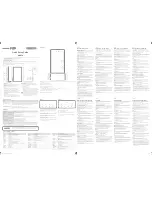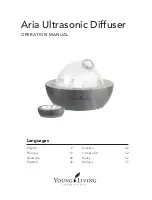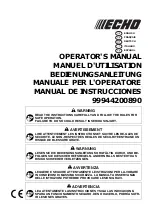
CS725 Snow Water Equivalent Sensor
D-5
D.2 Does most of the gamma detection occur under
the area of the CS725?
Answer:
Yes, the closer the distance, the more influence it has on the overall readings
for a given area. The following table provides some theoretical calculations on
the contribution to total counts versus angle from the center.
TABLE D-4. Contribution to Total Counts versus Angle from the Center
Angle Range Outer
Tadius @ 3M
Total Count Contribution
with Collimater
Total Count Contribution
Without Collimator
Sum
from 0°
Sum from 0°
0-5° (0.26 M)
0.4%
0.4%
0.2%
0.2%
5-10° (0.26 M)
1.55%
2.05%
0.85%
1.05%
10-15° (0.80 M)
3.0%
5.05%
1.55%
2.6%
15-20° (1.09 M)
4.3%
9.35%
2.2%
4.8%
20-25° (1.40 M)
6.0%
15.35%
3.1%
7.9%
30-35° (2.1 M)
9.0%
32.15%
5.05%
17.0%
35-40° (2.52 M)
9.55%
41.7%
6.0%
23.0%
40-45° (3.00 M)
9.55%
51.25%
7.0%
30.0%
45-50° (3.58 M)
9.2%
60.45%
7.9%
37.9%
50-55° (4.28 M)
8.6%
69.05%
8.75%
46.65%
55-60° (5.20 M)
7.9%
76.95%
9.15%
55.8%
60-65° (6.43 M)
6.9%
83.85%
9.6%
65.4%
65-70° (8.24 M)
5.8%
89.65%
9.65%
75.05%
70-75° (11.20 M)
4.5%
94.15%
9.2%
92.4%
75-80° (17.01 M)
3.2%
97.35%
8.15%
92.4%
80-85° (34.3 M)
2.1%
99.45%
6.0%
98.4%
85-90°
.55%
100%
1.6%
100%
The table above shows that 23% of the radiation counts come from sources
beyond the 60° beam angle when a collimator is installed versus 44% when the
collimator is removed.
Содержание CS725
Страница 2: ......
Страница 35: ......
Страница 47: ......
Страница 49: ...Appendix Title B 2 ...
Страница 52: ...CS725 Snow Water Equivalent Sensor C 3 ...
Страница 55: ......



































